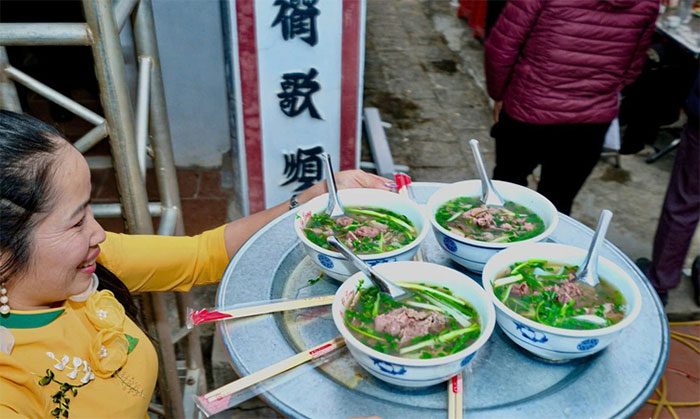Three famous dishes from Hanoi, Nam Dinh, and Quang Nam have been recognized as national intangible cultural heritage for their significant historical and community values.
On August 9, the Ministry of Culture, Sports and Tourism (MCST) announced the list of national intangible cultural heritage, specifically in the form of folk knowledge, which includes Hanoi Pho, Nam Dinh Pho, and Quang noodles.
According to the Ministry, all three intangible cultural heritages have been introduced by local authorities with full values such as representativeness, community identity, and local characteristics; they reflect cultural diversity and human creativity, passed down through generations; they have the ability to be revived and sustained for a long time; and they have the community’s consensus, voluntary nomination, and commitment to protection.
The MCST evaluates pho as a popular dish in Vietnamese culinary culture, favored by many both domestically and internationally.
According to the introduction of “Hanoi Pho” by the Hanoi People’s Committee, this distinctive dish is broth-based and typically served with beef and chicken. The cooking techniques, dining atmosphere, and cultural enjoyment have created a unique mark for Hanoi Pho. Many long-established pho shops in Hanoi are usually small, with a front area for preparing pho and often utilize sidewalks or inner alley spaces for dining tables.

A bowl of pho photographed in August 2023 at a restaurant in Dong Da District, Hanoi – where customers still line up as they did in the subsidized period. (Photo: Quynh Mai).
Most famous pho shops in Hanoi have secret recipes known only to the owners, who are often a couple; others cannot know the exact measurements and some special spices added to the broth. The recipe is only passed down to family members or relatives through hands-on training.
Regarding Nam Dinh Pho, the MCST noted that this dish has become a source of pride for the land and people of Nam Dinh; it affirms the brand value of its cuisine through unique features displayed in all stages, from preparation and selection of ingredients to the method of making distinctive pho noodles, processing, and completing a delicious bowl of pho that ensures flavor and nutritional quality.

Nam Dinh Pho is now available in many provinces and cities across the country – (Photo: NAM TRAN).
The Nam Dinh People’s Committee reported that long-established pho shops are mainly concentrated in Nam Dinh City, and street vendors selling pho first appeared here. Selling pho has become a livelihood for many villagers, but most serve in large cities. Many Nam Dinh residents have opened pho shops in other provinces, primarily in Hanoi, Hai Phong, and Ho Chi Minh City.
Quang noodles are also included in the newly announced heritage list. According to the Quang Nam People’s Committee, the craft of making Quang noodles is currently well-preserved and developed, providing stable income for practitioners, with a low risk of decline.

Quang noodles in Hoi An. (Photo: Huynh Nhi).
However, many noodle-making establishments are quickly adopting advanced technology, which poses a threat to traditional noodle-making shops. The younger generation is less inclined to engage in this craft as they pursue lighter jobs with higher income.
Hanoi Pho is also facing challenges as the younger generation tends to choose careers that align with modern times rather than selling pho. Hiring non-family labor to assist in sales has become a difficult issue for many shop owners trying to maintain their family trade.
In Nam Dinh, surveys show approximately 500 pho shops in the area, but nearly 1,500 households have moved to major cities to open pho shops.
The recognition of national cultural heritage serves as motivation to preserve and promote the value of these heritages. Currently, localities report they have plans to protect and promote the newly recognized heritage values.
According to the website of the Cultural Heritage Administration, the list of national intangible cultural heritages now includes nearly 500 heritages.




















































